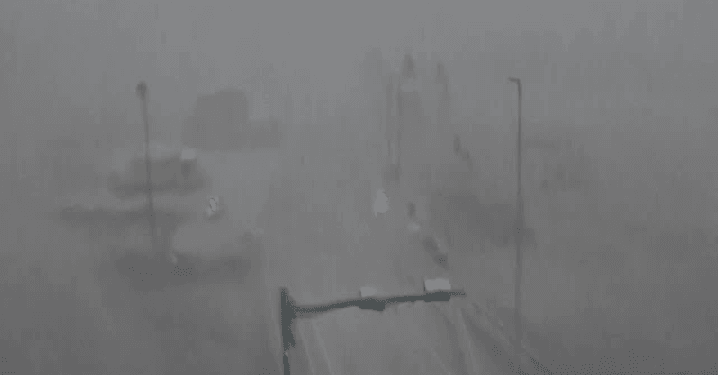Hurricane Milton has made landfall in Florida, with US officials warning that “life-threatening storm surge, extreme winds and flash flooding” are occurring in central parts of the southern state.
The “extremely dangerous” category three hurricane is one of the most powerful storms to form in the North Atlantic in recent years, the US National Hurricane Center (NHU) says.
It comes just two weeks after Hurricane Helene caused substantial damage across the US south-east.
When did Hurricane Milton hit Florida?
Milton made landfall in Siesta Key, Florida – a coastal community south of Tampa – at about 20:30pm EST on Wednesday (01:30 GMT Thursday), according to the NHC.
With current gusts of up to 115mph (185km/h), Milton will continue lashing the state overnight and throughout Thursday as it cuts through the centre of Florida before heading into the Atlantic Ocean Thursday afternoon and evening.
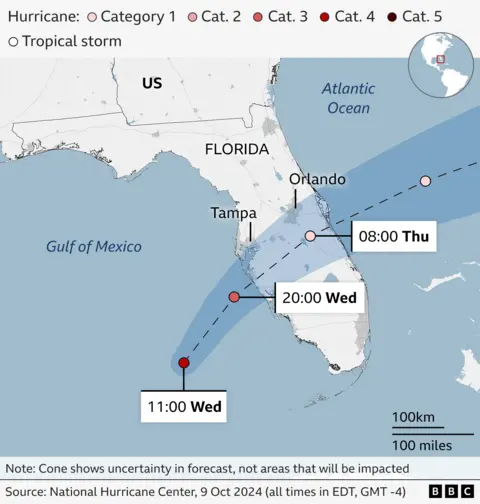
Milton is striking some of the areas already decimated by Hurricane Helene. Tampa, which has a population of more than three million people in its wider metropolitan area, is just north of Siesta Key where the storm made landfall.
Forecasters are warning of torrential rain, flash flooding, high winds and possible storm surges – which occur when water moves inland from the coast.
They say Milton could be the worst storm to hit the area in about a century – with a surge of 10-15ft (3-4.5m) possible, and localised rainfall of up to 1.5ft.
Where is Hurricane Milton – and what is its path?
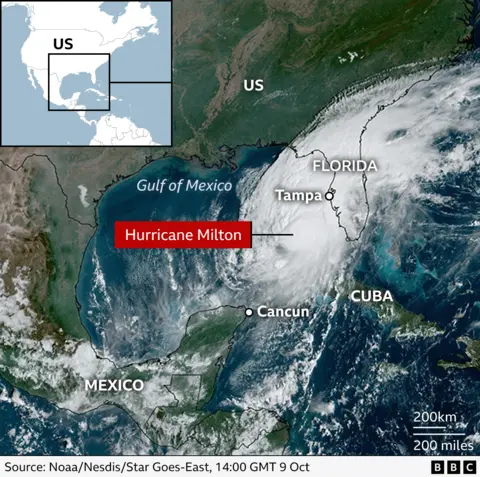
Milton is moving inland along Florida’s west coast, the NHC says.
Milton became a category one hurricane on Sunday and has been steadily moving eastwards, through the Gulf of Mexico, after brushing past Mexico’s Yucatan peninsula.
It has fluctuated slightly in strength, more than once achieving the most powerful status of category five, though it weakened before striking the US mainland.
The core of the hurricane is expected to pass over west-central Florida, with a large storm surge expected along a swathe of the state’s coast.
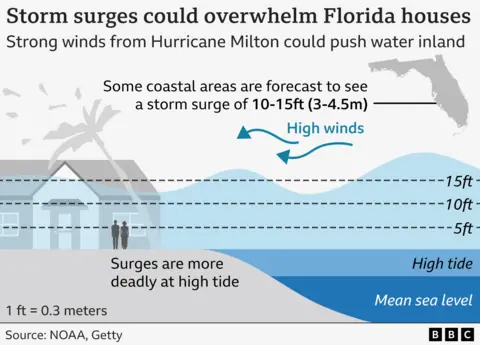
On Tuesday night, the NHC said the hurricane had “wobbled” to the south, leading forecasters to alter its track slightly. Even the most accurate forecasts are typically off by about 60 miles (100km) when the storm is 36 hours away, forecasters said.
Meteorologists are warning Hurricane Milton could also bring several tornadoes from scattered thunderstorms that may be triggered across central and southern Florida.
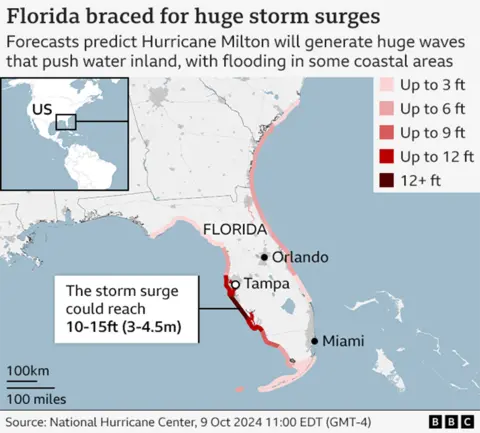
Where are the Hurricane Milton evacuation zones?
Floridians have been told to prepare for the state’s largest evacuation effort in years, with Governor Ron DeSantis warning that a “monster” is on the way.
Most counties are in an official state of emergency, and evacuations have been ordered up and down Florida’s west coast.
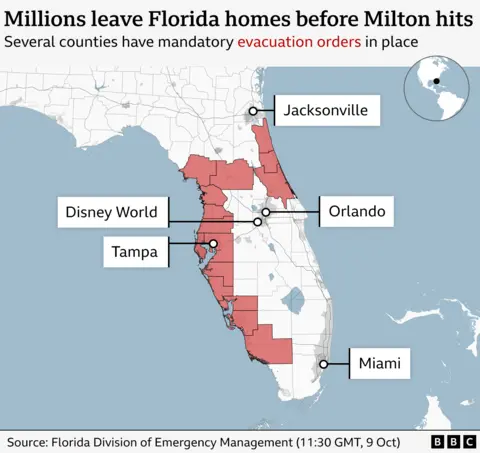
Disaster management authorities have issued a list and map of the evacuation orders.
Several large shelters have also been prepared as a last resort for those stranded.
Airports in Milton’s expected path have announced closures, and queues of traffic have been observed as people start to leave their homes.
- Are you in Florida? Please share your experiences
What is a hurricane and how do they form?
Hurricanes – sometimes known as cyclones or typhoons – are a type of tropical storm that form in the North Atlantic. They bring strong winds and heavy rain.
When ocean air is warm and moist, it rises, and then starts to cool – which causes clouds to form.
Sometimes this rising air can move away at the top of the hurricane more quickly than it can be replaced at the surface, causing the surface pressure to fall.
The falling pressure causes the winds to accelerate with more air then getting pulled in as the hurricane strengthens.
The National Oceanic Atmospheric Association (Noaa) predicted that the 2024 hurricane season would be more active than usual. Rising average sea temperatures due to human-caused climate change were partly to blame, it said.
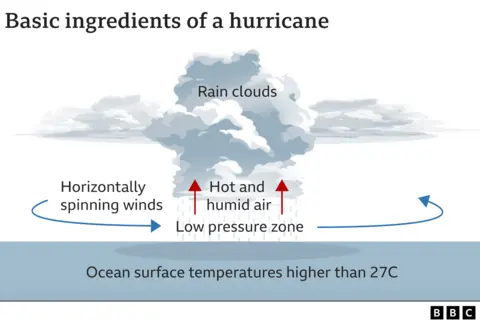
How are hurricanes categorised?
Hurricanes are separated into five categories based on their wind speed.
Milton was downgraded from a category five storm (the highest category) to a category four storm on Wednesday.
It is forecast to be downgraded further to a category three hurricane before it makes landfall, according to the NHC.
Category three hurricanes carry wind speeds of up to 130mph (209km/h) and can cause some damage to trees and buildings, Noaa says.
How is climate change involved
Hurricane Milton intensified quickly as it passed over exceptionally warm waters in the Gulf of Mexico, where sea surface temperatures are around 1-2C above average.
Warmer waters mean that hurricanes can pick up more energy, potentially leading to higher wind speeds.
A warmer atmosphere can also hold more moisture – up to about 7% for every 1C of temperature rise. This means that rainfall from hurricanes can be more intense.
And global sea-levels have been rising in recent decades, largely thanks to global warming.
This makes it more likely that a given storm surge will lead to coastal flooding.
In Florida, average sea-levels have risen by more than 7in (18cm) since 1970, according to US government data.
A full scientific analysis will be needed to quantify the exact role of climate change in Hurricane Milton.
But its rapid intensification fits with expectations of how these storms are changing in a warming world.






















